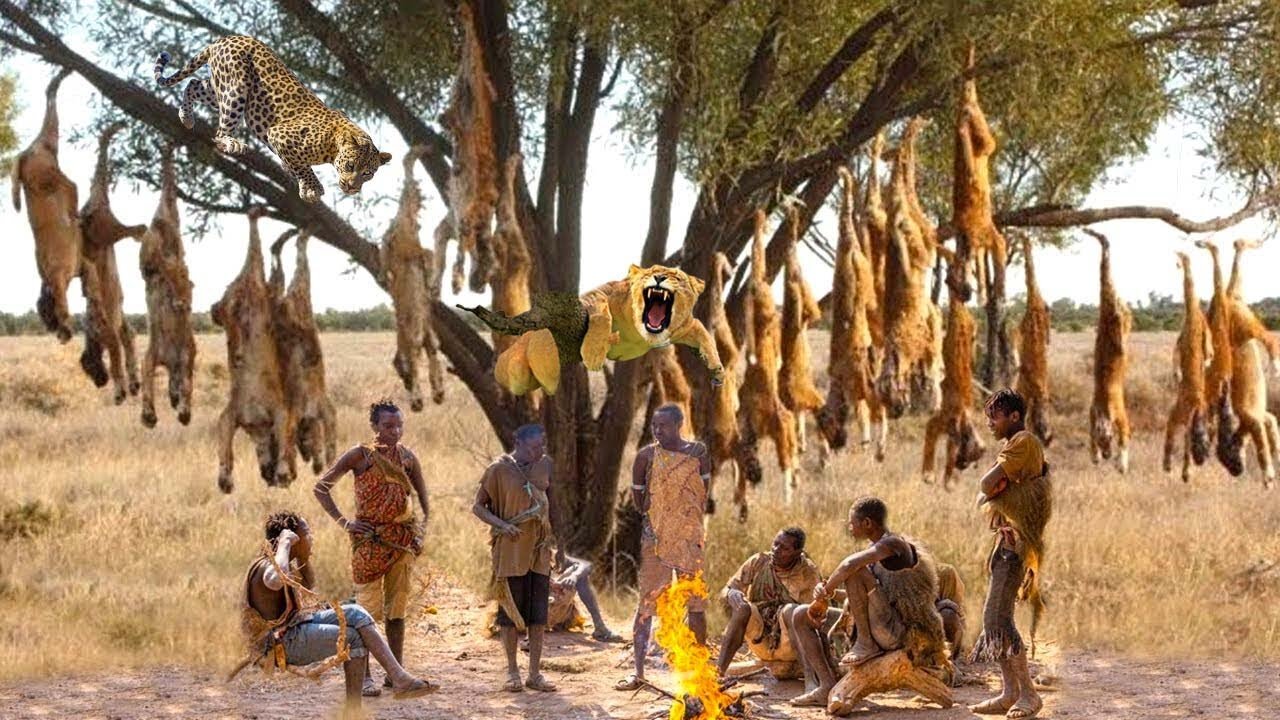Premium Only Content

Masai mara Tribal Fight With Cheetahs for Cheetahs Prey
The Maasai are a Nilotic ethnic group inhabiting northern, central and southern Kenya and northern Tanzania. They are among the best-known local populations internationally due to their residence near the many game parks of the African Great Lakes and their distinctive customs and dress.The Maasai speak the Maa language a member of the Nilotic language family that is related to the Dinka, Kalenjin and Nuer languages. Except for some elders living in rural areas, most Maasai people speak the official languages of Kenya and Tanzania, Swahili and English. The Maasai population has been reported as numbering 1,189,522 in Kenya in the 2019 census, compared to 377,089 in the 1989 census, though many Maasai view the census as government meddling and therefore either refuse to participate or actively provide false information.Many Maasai tribes throughout Tanzania and Kenya welcome visitors to their villages to experience their culture, traditions, and lifestyle, in return for a fee
The Maasai inhabit the African Great Lakes region and arrived via South Sudan. Most Nilotic speakers in the area, including the Maasai, the Turkana and the Kalenjin, are pastoralists and are famous for their fearsome reputations as warriors and cattle rustlers. The Maasai and other groups in East Africa have adopted customs and practices from neighbouring Cushitic-speaking groups, including the age-set system of social organisation, circumcision, and vocabulary terms
The Maasai territory reached its largest size in the mid-19th century and covered almost all of the Great Rift Valley and adjacent lands from Mount Marsabit in the north to Dodoma in the south. At this time the Maasai, as well as the larger Nilotic group they were part of, raised cattle as far east as the Tanga coast in Tanganyika (now mainland Tanzania). Raiders used spears and shields but were most feared for throwing clubs (orinka) which could be accurately thrown from up to 70 paces (approx. 100 metres). In 1852, there was a report of a concentration of 800 Maasai warriors on the move in what is now Kenya. In 1857, after having depopulated the "Wakuafi wilderness" in what is now southeastern Kenya, Maasai warriors threatened Mombasa on the Kenyan coast
-
 42:55
42:55
Stephen Gardner
1 day ago🔥Trump’s SURPRISE Move STUNS Everyone - Democrats PANIC!
83.6K110 -
 1:37:19
1:37:19
Badlands Media
13 hours agoBaseless Conspiracies Ep. 148: The Delphi Murders – Secrets, Setups, and Cover-Ups
33.7K15 -
 5:59:05
5:59:05
SpartakusLIVE
7 hours ago#1 MACHINE Never Stops The GRIND || LAST Stream UNTIL Friday
138K1 -
 28:36
28:36
Afshin Rattansi's Going Underground
1 day agoDoug Bandow: ENORMOUS DAMAGE Done to US’ Reputation Over Gaza, Trump ‘Easily Manipulated’ by Israel
22.6K29 -
 2:45:13
2:45:13
Barry Cunningham
14 hours agoCBS CAUGHT AGAIN! CHICAGO A MESS! LISA COOK IS COOKED AND MORE LABOR DAY NEWS!
102K49 -
 6:39:17
6:39:17
StevieTLIVE
8 hours agoMASSIVE Warzone Wins on Labor Day w/ Spartakus
27.2K1 -
 10:46:42
10:46:42
Rallied
14 hours ago $16.84 earnedWarzone Challenges w/ Doc & Bob
197K4 -
 3:26:25
3:26:25
Joe Donuts Live
7 hours ago🟢 Lost in Space with My Clones: The Alters Adventure Begins
35.4K5 -
 7:20:22
7:20:22
Dr Disrespect
16 hours ago🔴LIVE - DR DISRESPECT - TRIPLE THREAT CHALLENGE - WINNING AT EVERYTHING
222K12 -
 2:35:33
2:35:33
Chrono
8 hours agoBirthday-eve Stream | Helldivers II
30.7K1